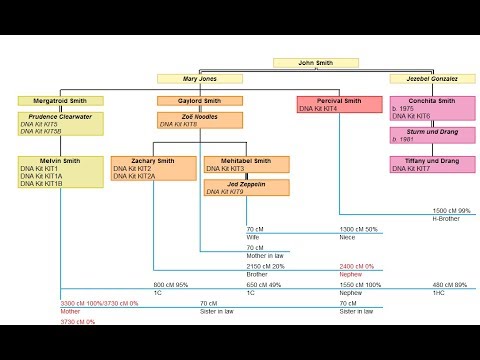
Unlike a company stock, the number of shares outstanding of an ETF can change daily because of the continuous creation of new shares and the redemption of existing shares. The ability of an ETF to issue and redeem shares on an ongoing basis keeps the market price of ETFs in line with their underlying securities. For broad-based exposure to UK equities, https://1investing.in/ there are several UCITS ETFs that track the FTSE 100 index, which consists of the 100 largest publicly listed companies in the United Kingdom. The HSBC FTSE UCITS ETF, for example, is listed on the London Stock Exchange and trades under the ticker symbol HUKX. The ETF has an ongoing charge of 0.07% and a dividend yield of 3.52% as of 2023.

Exchange traded funds (ETFs) invest in a basket of securities, such as stocks, bonds, and commodities, just like mutual funds. Unlike mutual funds, ETFs can be traded whenever the markets are open, just like individual stocks. In addition, ETFs typically have lower fees than mutual funds and are built to be tax-efficient, helping you keep more of what you earn. An exchange-traded fund (ETF) is a type of pooled investment security that operates much like a mutual fund. Typically, ETFs will track a particular index, sector, commodity, or other assets, but unlike mutual funds, ETFs can be purchased or sold on a stock exchange the same way that a regular stock can. An ETF can be structured to track anything from the price of an individual commodity to a large and diverse collection of securities.
$0 online listed equity trade commissions + Satisfaction Guarantee.
Most brokers offer robust screening tools to filter the universe of available ETFs based on a variety of criteria, such as asset type, geography, industry, trading performance or fund provider. There is a lower chance of ETF share prices being higher or lower than their actual value. ETFs trade throughout the day at a price close to the price of the underlying securities, so if the price is significantly higher or lower than the net asset value, arbitrage will bring the price back in line.
The World’s First 0DTE Options-Based ETF Is Here – Investopedia
The World’s First 0DTE Options-Based ETF Is Here.
Posted: Thu, 14 Sep 2023 16:55:57 GMT [source]
The company’s purpose has always been to « Create technology to provide liquidity on better terms. Compete on price, speed, size, diversity of global products and advanced trading tools. » If you’ve figured out the ins and outs of ETF investing and feel ready to put real money to work in an ETF portfolio, the next step is to fund your online brokerage account and start investing. Longer-term investors could have a time horizon of 10 to 15 years, so they may not benefit from the intraday pricing changes. Some investors may trade more due to these lagged swings in hourly prices. A high swing over a couple of hours could induce a trade where pricing at the end of the day could keep irrational fears from distorting an investment objective.
What’s a Typical Mutual Fund Expense Ratio?
For instance, if you own a double leverage natural gas ETF, a 1% change in the price of natural gas should result in a 2% change in the ETF on a daily basis. However, if a leveraged ETF is held for greater than one day, the overall return from the ETF will vary significantly from the overall return on the underlying security. A beginner may occasionally need to hedge or protect against downside risk in a substantial portfolio, perhaps one that has been acquired as the result of an inheritance. A beginner can similarly take advantage of seasonal gold strength by buying units of a popular gold ETF, like the SPDR Gold Trust (GLD), in late summer and closing out the position after a couple of months. Note that seasonal trends do not always occur as predicted, and stop-losses are generally recommended for such trading positions to cap the risk of large losses. ETFs are also good tools for beginners to capitalize on seasonal trends.
- Investors are planning to increase their ETF allocation to replace active managers (71% of respondents in 2019), but they are also seeking to replace other passive investing products through ETFs (42% of respondents in 2019).
- ETFs are baskets of securities with multiple assets like stocks, bonds, and gold, making them similar to mutual funds, especially index funds.
- The Charles Schwab Corporation provides a full range of brokerage, banking and financial advisory services through its operating subsidiaries.
- One of the most popular investing strategies – buying and holding an S&P 500 index fund – has been recommended by legendary investor Warren Buffett.
- While we strive to provide a wide range offers, Bankrate does not include information about every financial or credit product or service.
Our award-winning editors and reporters create honest and accurate content to help you make the right financial decisions. The content created by our editorial staff is objective, factual, and not influenced by our advertisers. Bankrate follows a strict editorial policy, so you can trust that we’re putting your interests first. As ETFs continue to surge in popularity, their numbers and types are growing every day. And understanding what they offer and how they’re different is key to choosing the right ETF for you.
Sector ETFs offer investors exposure to a basket of companies in specific industries such as technology, energy or healthcare. IShares sector ETFs are available with both a U.S. and global focus, providing investors an opportunity to express their views on a particular industry while limiting their exposure to the risks of owning individual stocks. While ETFs disclose holdings daily, that typically happens monthly or quarterly with mutual funds. The deep liquidity of ETFs — the speed with which they can be bought and sold — comes from the markets on which they are traded.
When researching ETFs you’ll also need to consider the fund’s expense ratio, or the fee the fund charges to manage and maintain it. Because most ETFs are passively managed, ETF expense ratios are typically pretty low compared with other types of funds. Unlike individual bonds, bond ETFs don’t have a maturity date, so the most common use for them is to generate regular cash payments to the investor. These payments come from the interest generated by the individual bonds within the fund.
Exchange traded funds let you invest in lots of securities all at once, and ETFs often have lower fees than other types of funds. Once you’ve determined your investment goals, ETFs can be used to gain exposure to virtually any market in the world or any industry sector. You can invest your assets in a conventional fashion using stock index and bond ETFs, and adjust meaning of industrial goods the allocation in accordance with changes in your risk tolerance and goals. You can add alternative assets, such as gold, commodities, or emerging stock markets. You can move in and out of markets quickly, hoping to catch shorter term swings, much like a hedge fund. The point is, ETFs give you the flexibility to be any kind of investor that you want to be.
Open a brokerage account
The growth of the ETF industry has generally driven expense ratios lower, making ETFs among the most affordable investment vehicles. Still, there can be a wide range of expense ratios depending upon the type of ETF and its investment strategy. In most cases, it is not necessary to create a special account to invest in ETFs. One of the primary draws of ETFs is that they are more liquid because they can be traded throughout the day and with the flexibility of stocks.
Our experts have been helping you master your money for over four decades. We continually strive to provide consumers with the expert advice and tools needed to succeed throughout life’s financial journey. While we adhere to strict
editorial integrity,
this post may contain references to products from our partners.
If you’re new to ETF investing, it’s important to understand the costs involved. Over the years, EDHEC survey results have consistently indicated that ETFs are used as part of a truly passive investment approach, mainly for long-term buy-and-hold investment rather than tactical allocation. ETFs are dependent on the efficacy of the arbitrage mechanism in order for their share price to track net asset value. A double-leveraged ETF does not always mean you will see double the return of the index.
Benefits of Stock Exchange-Traded Funds (ETFs)
Despite the high current adoption rate of ETFs and the already high maturity of this market, a high percentage of investors (46%) still plan to increase their use of ETFs in the future, according to the EDHEC 2019 survey responses. Investors are planning to increase their ETF allocation to replace active managers (71% of respondents in 2019), but they are also seeking to replace other passive investing products through ETFs (42% of respondents in 2019). Lowering costs is the main motivation for increasing the use of ETFs for 74% of investors. Investors are especially demanding further developments of ETF products in the areas of ethical, SRI, and smart beta equity and factor indices. When you buy individual stocks, you’re buying shares of a single company.
If everything else remains the same, then increasing the number of shares available on the market will reduce the price of the ETF and bring shares in line with the NAV of the fund. When an ETF wants to issue additional shares, the AP buys shares of the stocks from the index—such as the S&P 500 tracked by the fund—and sells or exchanges them to the ETF for new ETF shares at an equal value. When an AP sells stocks to the ETF sponsor in return for shares in the ETF, the block of shares used in the transaction is called a creation unit. Though ETFs provide investors with the ability to gain as stock prices rise and fall, they also benefit from companies that pay dividends.
Mutual fund managers will often need to sell securities when fundholders want to redeem their shares, which can trigger capital gains, which are then passed on to fundholders. ETF managers can avoid realizing capital gains because they have the ability to send out securities “in kind” rather than realize gains. ETFs are extremely transparent, with all of the asset holdings publicly listed each day, making it simple to understand exactly what is held by the fund. Gains from ETFs are taxed the same way their underlying assets are taxed. If you own a stock ETF and you sell the investment, any gain would be treated the same way as if you sold a stock. Hold the ETF for a year or less, and you’re subject to short-term capital gains taxes at your regular marginal tax rate.
- 2) ETFs are structured differently than traditional mutual funds—and the ETF structure is more tax-efficient.
- Bankrate.com is an independent, advertising-supported publisher and comparison service.
- This is because mutual funds, particularly those that are actively managed, often trade assets more frequently than ETFs.
- These securities allow investors to gain exposure to a basket of equities in a specific sector or index without purchasing individual stocks.
The primary reason this happens is that a fund hasn’t brought in enough assets to cover administrative costs. The biggest inconvenience of a shuttered ETF is that investors must sell sooner than they may have intended — and possibly at a loss. There’s also the annoyance of having to reinvest that money and the potential for an unexpected tax burden.
The goal of a passive ETF is to track the performance of the index that it follows, not beat it. There is also a group of ETFs that bet against the success of an index or sector, meaning the asset performs well when the underlying asset struggles. Unlike a mutual fund, a stock ETF charges minimal management fees and carries low expense ratios.
They can also be ultra-narrow in focus, specializing on a small group of companies in one subsector. ETFs have proven incredibly popular in the last few decades, and that popularity is set to continue. One of the most popular investing strategies – buying and holding an S&P 500 index fund – has been recommended by legendary investor Warren Buffett.

Zacks Rank stock-rating system returns are computed monthly based on the beginning of the month and end of the month Zacks Rank stock prices plus any dividends received during that particular month. A simple, equally-weighted average return of all Zacks Rank stocks is calculated to determine the monthly return. The monthly returns are then compounded to arrive at the annual return. Only Zacks Rank stocks included in Zacks hypothetical portfolios at the beginning of each month are included in the return calculations.
Expenses
Exchange traded funds (ETFs) are a type of security that combines the flexibility of stocks with the diversification of mutual funds. The exchange traded part of the name refers to how these securities are bought and sold on the market like stocks. The fund part refers to how an ETF provides easy access to diversification and exposure to a wide variety of asset classes.
We publish unbiased product reviews; our opinions are our own and are not influenced by payment we receive from our advertising partners. Learn more about how we review products and read our advertiser disclosure for how we make money. It allows you to experiment as much as you want without costing you a cent.
New ETF looks to tap hot market for zero-day options – Reuters
New ETF looks to tap hot market for zero-day options.
Posted: Thu, 14 Sep 2023 18:45:00 GMT [source]
For example, someone with a technological background may have an advantage in trading a technology ETF like the Invesco QQQ ETF (QQQ), which tracks the Nasdaq-100 Index. A novice trader who closely tracks the commodity markets may prefer to trade one of the many commodity ETFs available, such as the Invesco DB Commodity Index Tracking Fund (DBC). Over time, this approach can pay off handsomely, as long as one sticks to the discipline. As of 2017, there are thousands of Exchange-Traded Funds in existence. If you want to know who the largest fund management companies in the world are, here is a list of the top 10 fund companies ranked by assets under management (from etf.com). They can cover specific sectors, specific classes of stocks, or foreign or emerging markets equities.
Today, the market is indeed open to new issuance but companies have to come to terms with far lower valuations, according to Craig Coben, former global head of equity capital markets at Bank of America. Private valuations were extreme during the pandemic—a period of historically cheap debt and ample liquidity—and now investors and startups have to stomach marking down investments. At the center of everything we do is a strong commitment to independent research and sharing its profitable discoveries with investors. This dedication to giving investors a trading advantage led to the creation of our proven Zacks Rank stock-rating system. Since 1988 it has more than doubled the S&P 500 with an average gain of +24.32% per year. These returns cover a period from January 1, 1988 through July 31, 2023.


